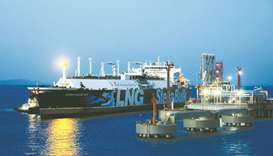IGU stresses key role of natural gas in world’s sustainable energy future

The International Gas Union (IGU) has welcomed analysis in the International Energy Agency’s latest World Energy Outlook (WEO), demonstrating the vital economic and environmental role natural gas will play in a sustainable energy future.
In this year’s Stated Policies Scenario (STEPS), the share of natural gas in global primary energy demand expands to about 25% by 2040. Gas will also retain a critical role in the Sustainable Development Scenario (SDS), retaining the 23% share in energy in two decades’ time that it held last year.
The WEO also states that “There is a robust long-term case for gases in the energy system. In the SDS, there are services that gases provide that it would be difficult to provide cost effectively using other sources. These include high temperature heat for industry, winter heat for buildings and seasonal flexibility for power systems.”
Furthermore, “gas infrastructure is a valuable asset that can be repurposed over time to deliver large volumes of bio-methane or, with modifications, low-carbon hydrogen.”
IGU President, Professor Dr Joe M Kang, said the report again confirms the critical role gas will play in the global energy transition.
“Natural gas is a clean and versatile energy source that unlocks an opportunity for the planet to reliably meet the globally growing energy demand, reducing GHG emissions and urban pollution and allowing economies to grow,” Kang said.
“Gas demand has fared better than oil and coal amid the continuing fallout from the Covid-19 pandemic. The WEO recognises that without structural changes in the way energy is produced and consumed and prudent policy choices, the emissions reductions seen this year will be short-lived. The gas industry has a critical role to play.
“Switching to gas from dirtier fuels, like coal, oil, or conventional biomass is possible now and can be achieved quickly, with immediate benefits of cleaner air, safer environment, cut emissions, and solid path to the integration of clean technologies for continued reductions in emissions.”
Further findings and projections relating to the natural gas market in the WEO include:
n Natural gas demand will decline by only 3% in 2020 as a result of the Covid-19 pandemic, proving more resilient than oil and coal, which will see annual falls in consumption of 8% and 7% respectively. Less gas use in commercial and public buildings has been offset by increased residential consumption, while the decline in industrial demand was mitigated by fuel switching.
n In STEPS, global gas demand will expand by 15% by 2030 from the 2019 level, and by 30% by 2040. This growth will be driven by gains in south and east Asia, supported by competitive prices, a push to improve air quality and manufacturing growth.
n Even in a ‘delayed recovery scenario’, gas demand recovers to the pre-pandemic level in 2024, and climbs 24% by 2040.
n Significant investment in new gas infrastructure will also be key, with the IEA predicting that $70bn will be needed annually.
n While China and India will account for around 45% of the demand increase over the next decade, growth will also be robust in Southeast Asia and the Middle East.
n In carbon-intensive economies, gas use can reduce emissions by replacing coal. In countries planning a pathway to net-zero emissions, the gas industry will need to demonstrate progress in methane abatement, via alternative gases such as bio-methane and low-carbon hydrogen, and technologies like carbon capture, utilisation and storage.